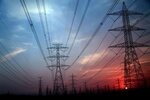News Release from WindEurope
Wind Industry Profile of
North Seas Summit focuses on how to deliver ambitious new offshore wind targets
The 9 countries pledged to build at least 260 GW of offshore wind by 2050, with intermediate targets of 193 GW by 2040 and 76 GW of offshore wind by 2030.
That’s 85% of the EU’s current offshore wind target of 300 GW by 2050. And 17 times more than all of the EU’s current offshore wind capacity.
The announcement comes on the back of the recent Esbjerg Declaration in which Belgium, Denmark, Germany and the Netherlands had agreed to jointly develop 150 GW in their North Sea territories.
Focus on supply chain bottlenecks
Faster renewables deployment is one of the three key pillars of the European Union’s REPowerEU agenda, its energy policy answer to the Russian war in Ukraine. Offshore wind is one of the most competitive and most scalable home-grown sources of electricity.
But the European wind energy supply chain is struggling. Companies face unforeseen challenges linked to the economic effects of war in Ukraine, supply chain disruptions from COVID19 as well as high energy and shipping costs. All of the five European turbine manufacturers are currently making a loss – an unsustainable situation that needs to change as soon as possible.
The NSEC Summit today recognised the crucial importance of strengthening Europe’s offshore wind supply chain. In various panel discussions the Summit explored ways to ensure that world-leading offshore wind will continue to be “made in Europe”. With regards to the right auction design for offshore wind participants agreed that auctions should include non-price criteria. The NSEC Ministers want the European Commission to fast-track its planned Guidance on non-price criteria. There was also broad consensus that negative bidding is not the right way to auction offshore wind.
The NSEC Ministers were also clear that the ambitious expansion of offshore wind in the North Seas faces a number of bottlenecks, including infrastructure and workforce availability. Europe will need to invest at least €6.5bn in upgrading its port infrastructure. And it will only reach its offshore wind targets with more, sufficiently trained staff. Today 77.000 European work in offshore wind. By 2030 this could be as many as 200.000. The European Union and Member States must encourage young talents to join offshore wind careers and ensure sufficient study and training programs that impart the required technical skills.
“It was really good meeting with Energy Ministers here in Dublin. It’s great they’ve focused on the wind energy supply chain. It has to more than double in size if it’s going to meet the EU’s offshore wind targets. That requires crystal clear visibility from Governments: they need to decide where, when and how exactly they’re going to build these new offshore wind farms”, said Giles Dickson, WindEurope CEO.
Joint planning and cross-border projects
Crucially the NSEC countries want to cooperate in developing the future North Seas offshore grid. They will support ENTSO-E in preparing a strategic offshore network development plan for 2050 next year. This will include innovative cross-border projects, so-called hybrid offshore wind farms.
To enhance the necessary cross-border collaboration on offshore wind the North Seas countries will develop a renewed common NSEC chapter in the upcoming updates of their respective National Energy and Climate Plans.
They also pledged to fast-track the permitting of offshore wind projects in line with the European Union’s REPowerEU agenda. In this context a sea-basin approach to maritime spatial planning was considered more essential than go-to-areas for offshore wind.
- Source:
- WindEurope
- Author:
- Press Office
- Link:
- windeurope.org/...
- Keywords:
- WindEurope, offshore, North Sea, summit, target, net zero, Europe, country, GW, joint lanning, cross border, wind farm
























